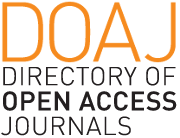Extraction and analysis of suicide causes through linguistic markers in news reports
Abstract
The automatic analysis of suicide data(texts) has become a challenge for the computational linguistics research field, increasingly, tools are needed to help reduce suicide rates, for example, by extracting the suicide causes in order to support their early detection. Linguistic aspects in Spanish texts, such as cue phrases or parts of speech, can help in this task. Therefore, this paper presents a computational approach to the extraction and analysis of suicide causes from news reports in Spanish. The automatic extraction of suicide causes is carried out through linguistic markers based on verbs, connectors, prepositions and conjunctions. On the other hand, the analysis of the suicides causes is performed in two approaches: a) an analysis focused on verbal and noun phrases, studying the presence of the negation; b) an analysis on the frequency about unigrams or bigrams of words. Both analyzes show promising and correlated results, which are useful for recognizing the suicide causes reported in Mexico in a given period. Finally, a corpus is obtained with a collection of 581 suicide causes.
Copyright (c) 2019 José Alejandro Reyes Ortiz, Mireya Tovar

This work is licensed under a Creative Commons Attribution 4.0 International License.
Authors who publish with this journal agree to the following terms:
- Authors retain copyright and grant the journal right of first publication with the work simultaneously licensed under a Creative Commons Attribution License that allows others to share the work with an acknowledgement of the work's authorship and initial publication in this journal.
- Authors are able to enter into separate, additional contractual arrangements for the non-exclusive distribution of the journal's published version of the work (e.g., post it to an institutional repository or publish it in a book), with an acknowledgement of its initial publication in this journal.
- Authors are permitted and encouraged to post their work online (e.g., in institutional repositories or on their website) prior to and during the submission process, as it can lead to productive exchanges, as well as earlier and greater citation of published work (See The Effect of Open Access).













